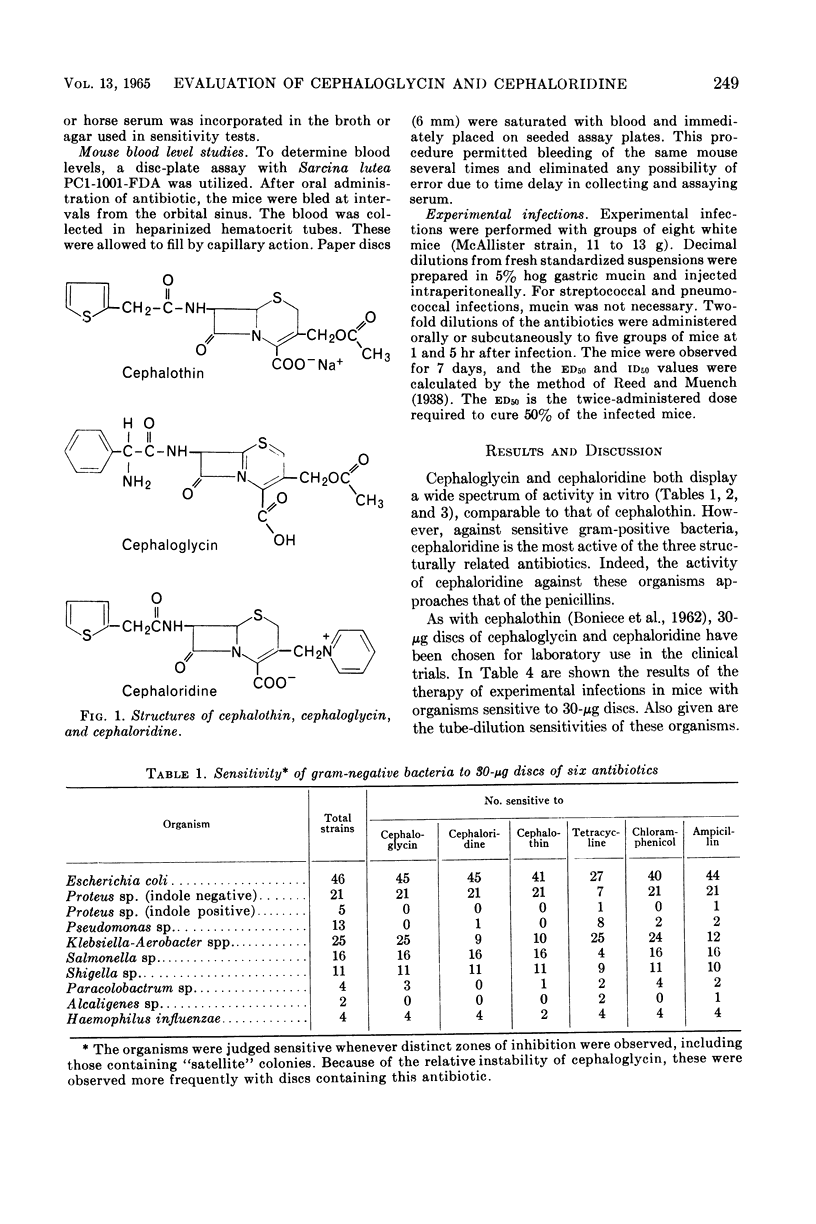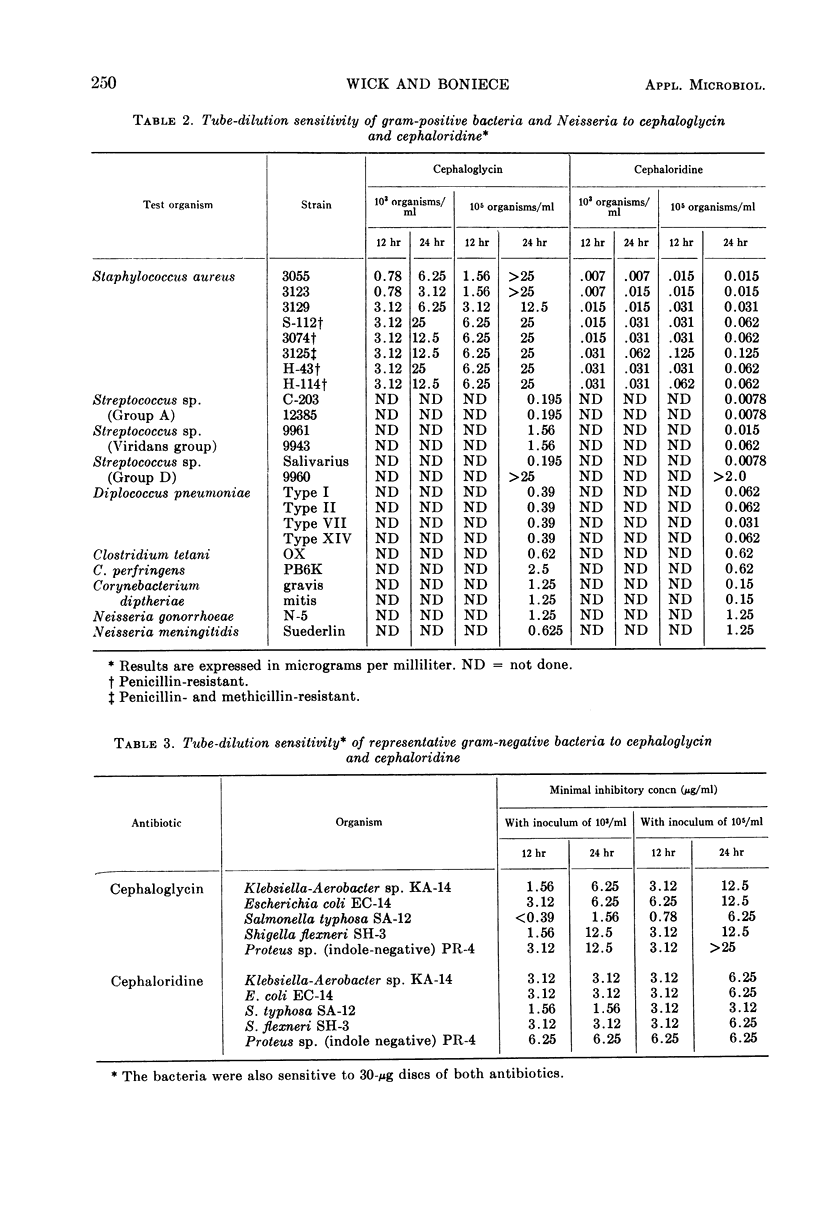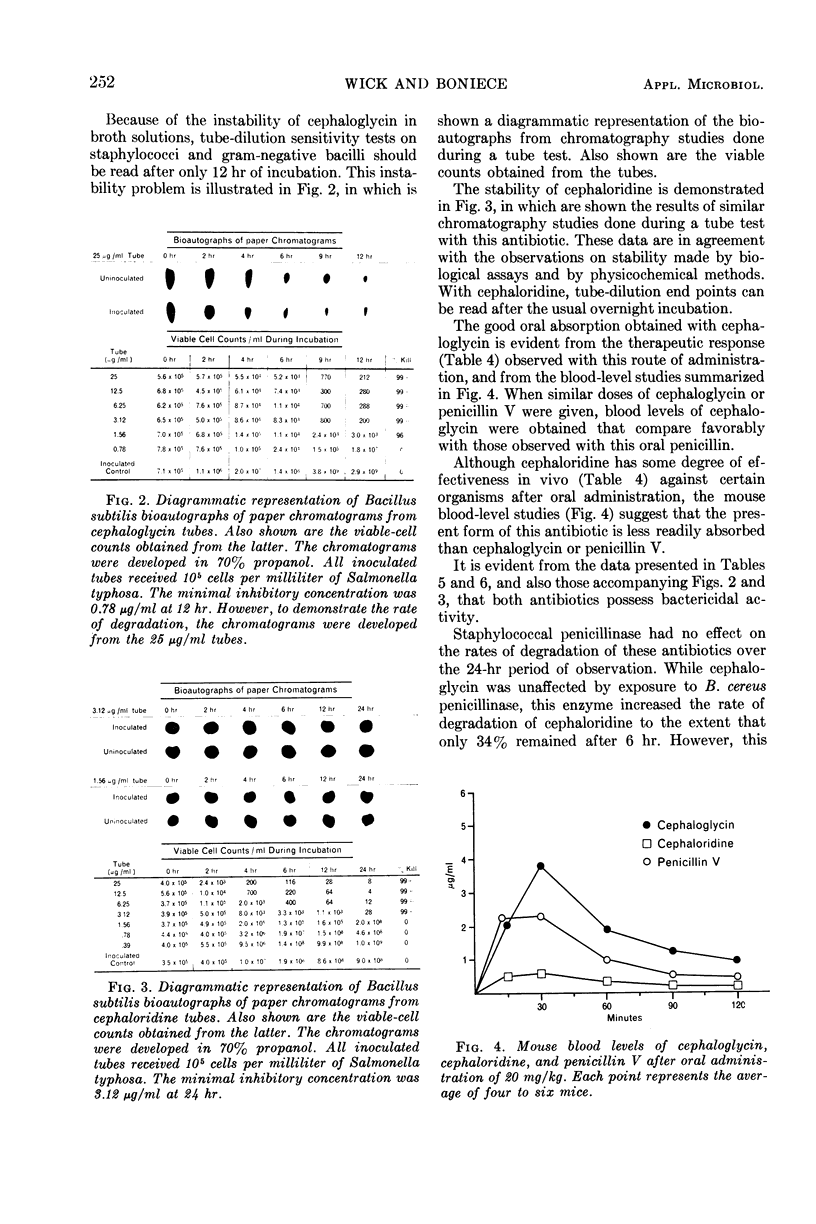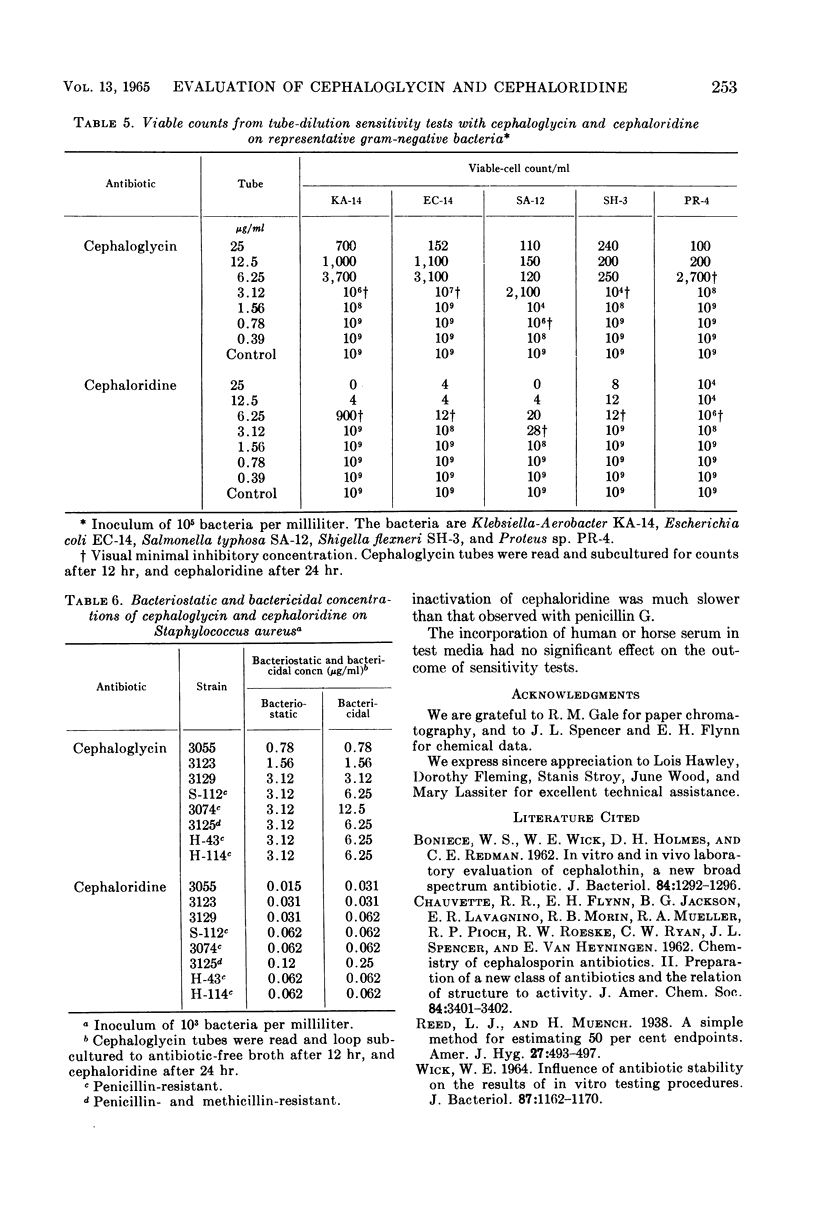Abstract
Two new antibiotics, structurally related to cephalothin, have been given the generic names cephaloglycin and cephaloridine. Cephaloglycin is the dipolar ion of 7-(d-α-aminophenylacetamido)-cephalosporanic acid. Cephaloridine is 7-[α-(2-thiophene)acetamido]-3-(1-pyridylmethyl)-3-cephem-4-carboxylic acid betaine. These new compounds were evaluated simultaneously. The broad spectrum of activity observed in vitro and in vivo with both antibiotics, the good oral absorption obtained with cephaloglycin, and the stability of cephaloridine are emphasized. The data suggest that both antibiotics merit clinical trial in humans.
Full text
PDF





Selected References
These references are in PubMed. This may not be the complete list of references from this article.
- BONIECE W. S., WICK W. E., HOLMES D. H., REDMAN C. E. In vitro and in vivo laboratory evaluation of cephalothin, a new broad spectrum antibiotic. J Bacteriol. 1962 Dec;84:1292–1296. doi: 10.1128/jb.84.6.1292-1296.1962. [DOI] [PMC free article] [PubMed] [Google Scholar]
- Wick W. E. Influence of antibiotic stability on the results of in vitro testing procedures. J Bacteriol. 1964 May;87(5):1162–1170. doi: 10.1128/jb.87.5.1162-1170.1964. [DOI] [PMC free article] [PubMed] [Google Scholar]


